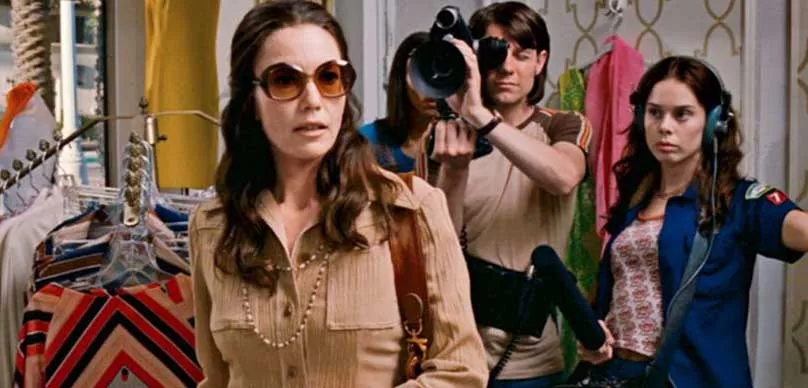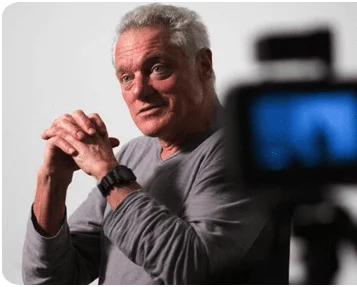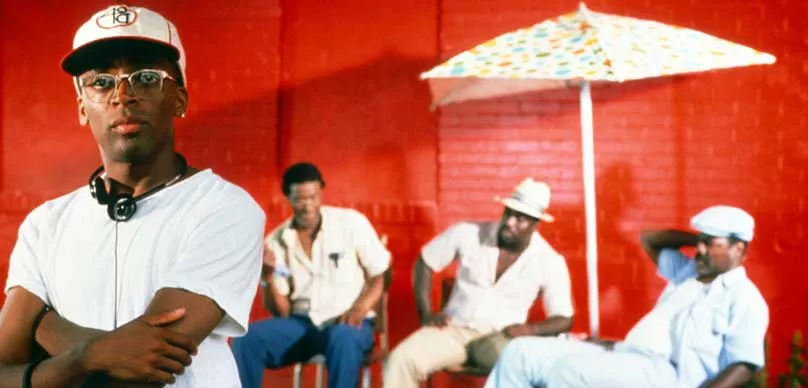Cinema Verite is a French film movement, which took place back in the 1960s. This film movement forced the movie industry to pay more attention to incorporating natural actions and authentic dialogue into the movies, which showed people in day to day lives. Basically, the movement was about observing and capturing life as it was or finding truth in the moving images.
Before this movement, filmmakers recorded footage, interviews, and actual conversations separately. The camera was usually handheld. Then they would review the footage and cut them altogether. However, this technique did not have the ability to give life to realistic-looking movies.
Many different factors influenced the production of documentary movies in the 20th century. Post World War II, the neorealist movement, and the British independent documentaries hold a prominent place out of them. In fact, all these reasons contributed significantly to the rise of Cinema Verite during the 1960s. However, the film industry elites heavily criticized the Cinema Verite movement at that time.
That’s because it focused more in reportage instead of showing the expressions of the artist. However, the primary objective of the Cinema Veritemovement was to direct movie industry into greater realism. The method made it possible to create a tremendous impact on the documentary filmmaking, which can even be seen today.
History of Cinema Verite
Cinema Verite was able to give life to some of the outstanding productions in the history of French Cinema. Chris Marker’s Le Joli Mai and Jean Rouch’s Chronique d’un ete, which were released during the early 1960s, are perfect examples to prove the above-mentioned fact.
A movement that is similar to Cinema Verité was originated in the United States as well. It was powered by the introduction of 16mm equipment, which had the ability to record audio and video content in a synchronous manner. This equipment was portable and relatively inexpensive when compared to the other devices that were being used in the movie industry at that time.
The movement that took place in the United States was also known as Cinema Verite, but it became popular as Direct Cinema, because of the obvious language barrier. The primary objective of this movement was to capture the movements and expressions of a person in a realistic manner. This movement was against the rearrangement of the camera.
The pioneers of this movement include the Maysles brothers, Donn Pennebaker, Frederick Wiseman, and Ricky Leacock. The immense contributions they did to the Cinema Verite movement in the United States delivers positive results even up to date.
What Ever Happens, Happens!
As mentioned earlier, Cinema Verite was able to create a significant impact on the global film industry. Those influences can even be seen today. Therefore, it is important to compare Cinema Verité with the modern documentary style and get to know about the noticeable differences that exist in between these two.
The popularity of modern documentary has significantly increased throughout the past couple of years. However, the roots of it go back to the 1960s, where Maysles brothers came into the industry. It was changed along with the generations, but the primary influences remained unchanged.
First of all, it is important to have a clear understanding of the meaning behind real documentaries. Even though movies that were based on actual stories were released back in history, the raw essence of people was not incorporated into them. In other words, real places, real events, or the interests of real people were not taken into account as a whole when creating the documentaries.
Even though the exact meaning behind true documentary has changed along with time, it is based on some fact or truth. The films that fit into it can be divided into two broad categories as Cinema Verité and modern documentary.
Check out the amazing HBO film Cinema Verité, starring Diane Lane, Tim Robbins, and James Gandolfini.
The first documentary was created back in 1922 by Robert J. Flaherty. The film’s name was Nanook of the North. This silent documentary was filmed in the frozen wilds of Canada. No historical evidence about a feature-length documentary is found before this film, and it can be considered as the first-ever documentary as a result of it. The government of the United States knew the importance of this documentary.
This is the main reason why the government selected this documentary into the first 25 films to be preserved. The Library of Congress plays a significant role in these preservation activities.
Now it is important to take a look at Cinema Verité, which took place during the 1960s. Cinema Verité movement was originated along with the French New Wave movement.
The increasing popularity of portable audio and camera equipment contributed a lot towards the origins of it. In other words, Cinema Verité gave life to a studio type style of production. Cinema Verité promoted the production of movies that captured a raw style with the help of on location, audio, video and lighting.
David Maysles, Albert Maysles, and Robert Drew were prominent figures behind Cinema Verité. They took necessary measures to introduce new advancements into this conceptual style along with the help of direct cinema. These new additions emphasized direct relationships between the subjects and the film crew. As a result, they were able to give life to more realistic looking productions at the end of the day.
Before the Cinema Verité, there was a narrator in all the documentaries, who explained things to the audience. Cinema Verité eliminated the role of the narrator, and it gave life to a new revolution. In fact, it delivered more freedom to the editor. That’s because the editor got the freedom to tell the story with freedom and in an obscure manner.
The modern documentary style has some differences when compared to the Cinema Verité style. The main difference that you can find in between these two styles is the presence of a narrator. On the other hand, a lot of time, as well as effort, are being put into the post-production stage of modern documentaries. Also, the cinematography is a lot more sophisticated than the documentaries which came out as a result of Cinema Verité.
The post-production stage is associated with a variety of activities that include sound design, music design, graphic effects, and other forms of editing. More directorial control came out as a result of Cinema Verité. They looked more like the documentaries that were created by Michael Moore. Roger and Me is a perfect example to prove the fact mentioned above.
Facts about Cinema Verite
Cinema Verite is also known as observational cinema. If you pay close attention to this style, you will figure it out as more of pure direct cinema. That’s because it does not incorporate the voice-over of a narrator.
You will also be able to figure out a couple of subtle, but important changes. Cinema Verite was associated with the interaction between the subject and the filmmaker along with style setups. This interaction was there up to the point of provocation as well.
They firmly believed that it is the most convenient method available for them to express the truth behind the cinema. Cinema Verite acknowledged the camera as well. In fact, the camera plays a significant role by filming people, objects, and events related to the scene in a confrontational manner. The primary goal of the filmmaker was to represent the exact reality that he was experiencing at the time of recording.
They believed that giving life to such realistic outputs can free people from all sorts of deceptions. To achieve this, the filmmakers wanted to be the catalysts of all situations. As a result, they had to put a tremendous effort into the entire scene as well.
In the Cinema Verite style, the filmmakers set up the whole scene and then proceed to record them and capture lightning in a bottle. An excellent example of this is the 1963 film Pour La Suite Du Monde. The filmmaker asked a group of senior individuals to fish for a whale. The result of the documentary was not recording how a group of elders was whale fishing.
It was about lineage and memory. In this sense, Cinema Verite style is concerned about anthropological cinema. The political and social implications were also captured in the movies. On the other hand, it changed the way how a filmmaker shoots a film and what are the objects that are filed in it. On the contrary, Cinema Verite focused on what specific objects should be recorded on a movie and the way how it should be presented to the audiences.
Spoiler
LATE SHOW WITH LINDSAY ANDERSON
Whatever he thought of this country he railed against it he was never happy out of it he was very British he was Scott’s also his background very English in his concerns and institutions and was trying to create images of this country.
Clip: After they finish work the boys usually make for Albert’s one of the cafes around the garden that is open late at night.
It was quite clear to Lindsay Anderson and his friend (name) it was impossible to break into the British cinema coming straight out of the university the only way to get into cinema was to make documentaries.
We were all sort of socialist but the films weren’t at all in sense bulimic or programmatic or anything like that they were they actually took their queue from I suppose the cinema from Humphrey Jennings that is to say working from observation of unrehearsed human details.
We were very conscious of, I was very conscious of the need to be what I call ethic to fashioned the material into something and not suddenly sit down and have a lot of talking heads blathering into the camera lens pretty uninteresting I think.
It was never a school or an organization or an office or a company it was an idea and everybody went on to do other things, I mean Lindsay for instance went on to do a lot of theatre.
I was assigned to Lindsay as an assistant at the Royal Court I had never met him before and my first memory rather than even been about the play was he taking me to the transport cable rather than putting me on the mat to find out if I was going to work out alright with him and as I remember he was very anxious to kind of challenged anything he thought of as being middle class bully minded conventional, but I think everyone felt that something new and exciting was happening.
We were going to change things perhaps naïve at that point which of course excited Lindsay very much and I think he really thrived on that atmosphere and probably the court was as nearer spiritually as Lindsay has ever found.
CLIP: I don’t know in the process of this and you putting it down and then we got stuck and we don’t have any more to do.
I thought I would take it off and put it over my arm wait for Bill to finish his.
It gave him much greater experience and a very useful one of dealing with actors which he didn’t have much of before this was of course extremely valuable for him when he came to make his feature film.
CLIP: Man: I know much about you to keep you in the rubber room for the rest of your life.
Lady: You don’t know nothing about Eddie or me you don’t know nothing about Eddie.
Man: I know he put the file through his guts.
He directed in a way that there was almost non directorial every time you turn the corner he was there facing you every time you turn around he was at your shoulder, he was always under your bed when you went to bed, always with you always with you always talking about it always investigating it always planting seeds and one day you thought you were on your own you were part of his world.
He was a great free spirit Lindsay and is a great emotional Lindsay which if you ever touch it wonderfully free and embracing.
Stories book is in a tradition of a DH logs because it was about people who have great difficulty in articulating their emotions and in the way and to bring this out was to convey this stylistically in the movie.
Lindsay’s difficulty and the generosity in making it were really focused around that and trying to get inside and some very personal experience from the outside and finding his rational and being able in somewhere to understand it and not seem to objectively or too objectively so it became an objective almost an expressionistic technique.
One would have thought that after the sporting life that Lindesay would have been in great demand as it happened the film did not make a great deal of money and so he wasn’t a bankable director, the British ran in quite a lot of trouble the London cinema came out (5:26) which he greatly despise and eventually he had the opportunity to make if which came in with the revolutionary of the late sixties.
CLIP: You mustn’t think that I don’t understand it is a natural characteristic of adolescent.
Interestingly Peter Jeffers Donald in this scene was to a large extent lifted from the book called How Eating Works but I didn’t.
CLIP: I think you boys know I keep an open mind on most things and one thing I am certain short hair is no indication of (inaudible 6:08) so often I noticed hair rebels who stepped in the British whether there is a fire in the house or to sacrifice in order to give a holiday party to slum days in the country.
The country was arthritic in the sense that it was arthritic and yet it was the particular young people who were after change so the school pubic school would be a very good place to would be precisely where you set the (6:36) and that it was both traditional and yet somehow trading people who were discontent.
CLIP: You done it. like here really it comes out of documentary background you know you shoot in here it’s just a record of what it is like to being in this room and he also done a lot of theatre work so he knows how to dramatize the area but it’s still draws line in a way you know that Hollywood director would have started. He would have built all this and he wouldn’t have bothered to address the detail of it.
It is a film which conveys I think what I feel about life which is certainly a suspicion of all institutions and authorities and as for it hitting the right moment of that, it was absolutely astonishing because you could see it was transparently what everybody was interested in what went to the center of their lives and in that way it sometimes happens.
The film came at a time for Lindsay his careeralmost(8:22) from 1945 when as a young army officer he put the red flag out above the officers mess in India where he was then serving right through his disillusion with labour.
CLIP: Good morning say hello to Mr. Travis, please to meet you Mr Travis Barlo name), please to meet you at your service oh, this is Mavis be nice to Mr Travis Mavis, but not too nice, happy to greet you. Great pleasure, Come here come here. We have come to the part of the show you have all been waiting for.
I think Lindsay was some of the needed support and encouragement despite there is apparent self sufficient ironic defiant exterior and I think this starting collapsing and I think the subjects for the films really went out of fashion out of politically fashion and when once the agency came Lindsay is much too radical and to subversive about what he said about society about England.
No artist is worth much as name change the world of course no artist can be judge by his success or failure but to change the world since none of us have succeed we can only hope to change or to influenced likeminded spirits or hearts by telling the truth.
Hanson as a film critique and as a film director do these two things come together is one of the great English (10:21) he is a person who calls us as readers and …to see that film is of the utmost social importance. This is the kind of cinema he wanted to create and despite all he should not have the opportunity to stick around and making movies, but the sad thing was that his own writing his own example meant so little to the younger film makers so certainly neglected.
CLIP: Would you like standard or golden, standard or golden what the difference, well the golden service they retexture and hand finish. Okay, golden service. We are on it keep the crease in the trousers? “keep the crease yes and don’t forget I am a shareholder”. Do you ever let us forget? I certainly can’t afford to.
You can see Lindsay Anderson’s last film Is That all There Is on BBC 2 on Saturday and indeed that is all there is for the late show for Night.
CHRONICLE OF A SUMMER
Subsequent to this festival where they met each other ..claims some critical writing where they Cinema Verite or cinema of truth which often gets interpreted it is in a sense homage to the work of (name 14) the Russian film maker who claimed the term KINNO-NPBBA meaning also the truth of cinema in both cases their meaning not that the film is showing us the truth but the film provokes its own kind of truth that within the film we see a kind of truth emerging.
So very differently the that direct cinema folks in the US at the time who were like the camera will tell the truth it’s the fly on the wall that will just follow people the idea of interfering and showing people making up a film and at the same time was you know completely shocking and often the two movements are considered to be very much the same and they are not they are very much in dialogue.
So they were very interested in creating these kinds of scenario to evoke a kind of explanation of what the truth might be and the lives of parishioners at this time and just by the fact that diversity of people in the film they were already anticipating there were many ways to imagine what that might be.
Bruce believed that people in performance or in ritual or any form of dramatization people only become more of they really are so there is not a lack of truthfulness because people are performing because people are in ritual I mean he sort of extends this from his view of ritual they are just revealing another aspect of themselves.
I think that they were somewhat naively hopeful that somehow all these people would come to really love each other through the film and be comfortable with each other’s representations and that actually did not occur. It is part of what I think makes the film successful from most viewers.








